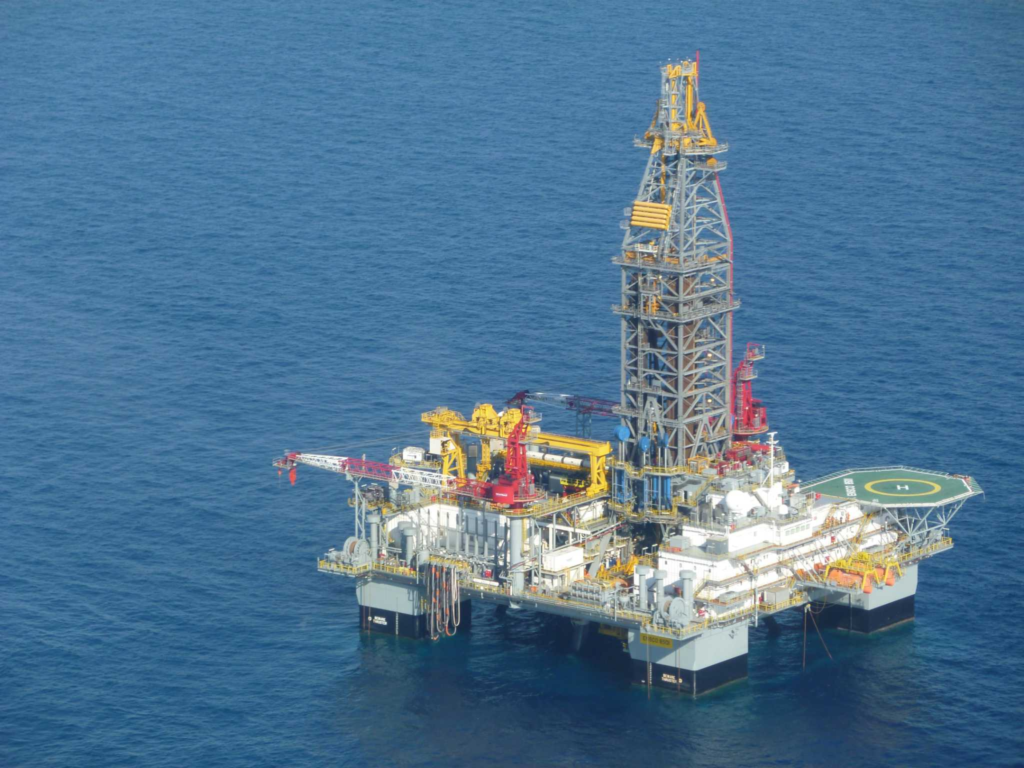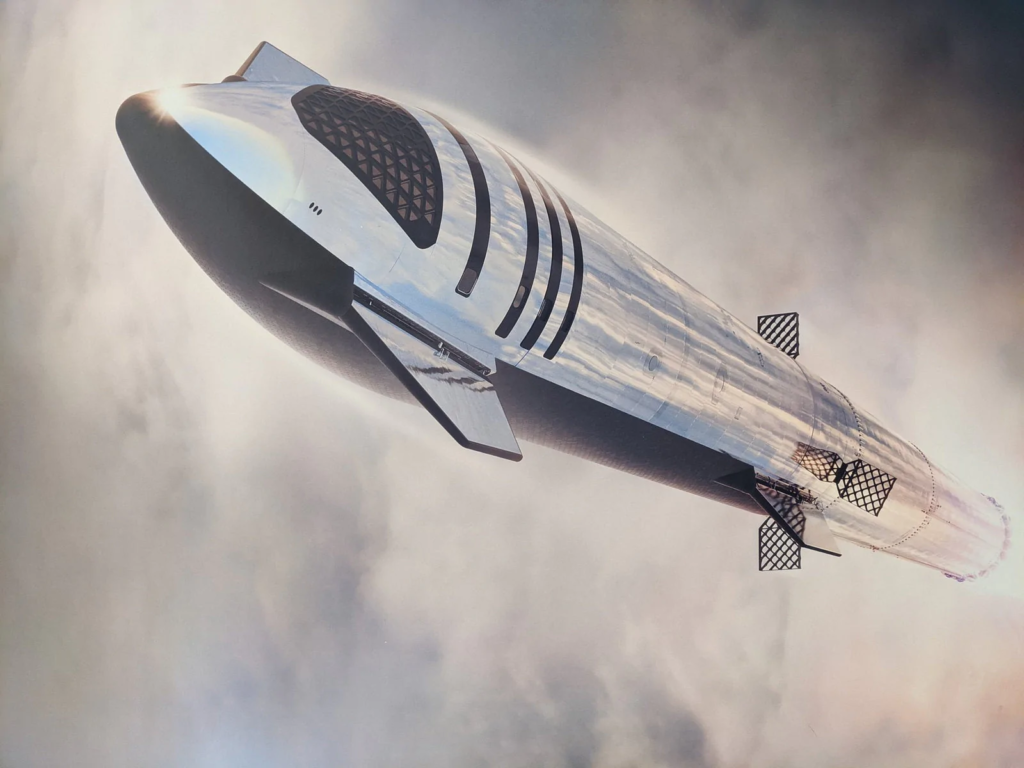
What Progress Has Been Made On SpaceX’s Oil Rigs?
It has been quite a while since we heard anything regarding SpaceX’s two oil rigs meant for future Starship operations. After being purchased in the middle of 2020, the two rigs began construction practically right away. Between then and early 2022 a decent amount of work had been completed in the process of transforming these two massive rigs.
Unfortunately, now in late 2022, it looks as if progress has halted for the most part. For months now very little has been done in regard to Phobos and Deimos. This brings up the question of what exactly is SpaceX’s plans and why has progress slowed. In reality, a lot of focus has likely shifted toward Starship’s first orbital test flight which is right around the corner.
Combine this with more opportunities at the Cape with Starship’s tower being built and the company has a lot on its plate. Either way, a decent amount of progress has already been made on these two rigs since being bought. Not to mention transforming two oil rigs into next generation launch complexes is no easy feat. Here I will go more in-depth into the journey of these two rigs, the progress they have made, what to expect in the future, and more.
Oil Rig Progress

Starting in July 2020, Lone Star Mineral Development LLC, a subsidiary of SpaceX, bought two semi-submersible drilling rigs from Valaris plc for $3.5 million each. At the time of being purchased the two rigs were practically identical and soon renamed Phobos and Deimos after the two moons of Mars.
Not long after being purchased in early 2021, Phobos was moved from the Port of Galveston to Pascagoula, Mississippi to begin refit of the rig for Starship operations by removal of the oil rig equipment, a planned six-month project. Between then and the middle of 2021, the rig had been cleared of the bulk of the old equipment on its deck. Images of the two rigs side by side highlight the significant amount of demolition work that had been completed on this rig. At a similar time, work also started to begin on Deimos. As far as updates, at the time we received quite a few from Elon and various sources.
For example in May of last year, Musk tweeted in response to a SpaceX oil rig render, “Ocean spaceport Deimos is under construction for launch next year” This leads to the most recent updates on the project which came early this year around February. At the time Musk was quoted mentioning, “Starbase, I think, it’s more suited to become our advanced R&D location, so it’s where we would try out new designs and new versions of the rocket, and I think Cape Kennedy would be our main operational launch site. Then, over time, I think we’re going to have floating spaceports like ocean spaceports, we’ve got these two converted oil rigs that are going to be turned into orbital launch sites, and they can be moved around the world.”
Focusing back on the rig’s progress, around early this year is when progress stopped. For almost one year now both of the oil rigs have been sitting in the Port of Pascagoula in the early stage of launch platform development. Phobos is the farthest ahead with a lot of its main equipment removed while Deimos hasn’t had too much work done. Either way, both rigs still have quite a long way to go. In order for them to be fully operational they have to be cleared of practically everything on the platform. From here, SpaceX needs to construct some massive launch towers, propellant tanks, and other large launch infrastructure to facilitate Starship missions. The idea being that once complete, they could move to different locations around the world and operate as a launch and landing pad for the rocket. In order to get there, Starships would fly out to sea and land on the platform.
SpaceX’s Plan

Now that we know exactly what’s been going on with SpaceX’s two oil rigs, we can take a closer look at what the company’s plan is and when we can expect to see work startup again on the platforms. In reality, the most likely reason for SpaceX halting work on the rigs is a shift in focus to a few other projects. Right now a lot of work is being done both at Starbase and the Cape. Looking at Starbase first, Starship’s maiden flight is closer than ever and expected to happen very soon. This means all hands on deck at the launch and production site as the company continues to try and make history. As for the Cape, SpaceX’s site Launch Complex 39A has been very busy as well with the massive Starship launch tower making impressive progress. As partially mentioned prior in the quote from Musk, this site at the Cape will be the main location for future Starship operations. Once both Starbase and the Cape are fully up and running, that is when the oil rigs will likely come back into the equation and work will begin again.
Another possible reason has to do with the amount of work, money, and time necessary for the two rigs. As we know, SpaceX’s Starship spacecraft and Super Heavy rocket (collectively referred to as Starship) represent a fully reusable transportation system designed to carry both crew and cargo to Earth orbit, the Moon, Mars, and beyond. Starship will be the world’s most powerful launch vehicle ever developed, with the ability to carry in excess of 100 metric tonnes to Earth orbit. In recent static fires of Super Heavy, we have seen the true power of only some of the booster’s engines, not to mention all of them. All of which make a launch and landing site on land a complex endeavor, and one at sea even more ambitious. The first stage, or booster, has a gross liftoff mass of over 3 million kg and uses sub-cooled liquid methane and liquid oxygen (CH4/LOX) propellants.
To help put it in perspective, there will be 33 Raptor engines on Super Heavy’s booster. The Raptor engine is a reusable methalox staged-combustion engine that powers the Starship launch system. Raptor engines began flight testing on the Starship prototype rockets in July 2019, becoming the first full-flow staged combustion rocket engine ever flown. In order for these engines to not completely destroy what ever infrastructure is setup around them during liftoff, an immense amount of work has to be done to prepare and avoid certain issues. Even the recent partial static fire left some damage at Starbase. At this point, I think SpaceX is trying to figure out launching and landing Starship on land before continuing to make progress on its future sea landing platforms.
In the future, the Starship and Super Heavy system are hoping to offer substantial mass-to-orbit capabilities. At the baseline reusable design, Starship can deliver over 100 metric tons to LEO. Utilizing parking orbit refueling, Starship is able to deliver unprecedented payload mass to a variety of Earth, cislunar, and interplanetary trajectories. The single launch mass-to-orbit assumes no orbital refueling of Starship. The maximum mass-to-orbit assumes parking orbit propellant transfer, allowing for a substantial increase in payload mass. These performance numbers assume full Starship reuse, including Super Heavy return to launch site. Not to mention, a few years ago the company also released information on possible Earth to Earth Starship operations. If the company decided to pursue this idea in the future, the oil rigs would be a way to facilitate the launches and landings.
All of which also connects to the use of Starship for crew. SpaceX was founded with the goal of making life multi-planetary. The Starship program is realizing this goal with the crew configuration of Starship. Drawing on experience from the development of Dragon for the Commercial Crew Program, the Starship crew configuration can transport up to 100 people from Earth into LEO and onto the Moon and Mars. The crew configuration of Starship includes private cabins, large common areas, centralized storage, solar storm shelters, and a viewing gallery. Just yesterday SpaceX tweeted saying, “Meet the @dearmoonproject crew” After being initially announced years ago, the mission has made a big step with the crew being picked. Specifically, they just announced ten crewmembers, including two backups, who will join the dearMoon mission. The dearMoon crew will be the first humans Starship will launch, fly around the Moon, and safely return to Earth. Over the course of their weeklong journey, this crew of artists, content creators, and athletes from all around the world will also travel within 200 km of the lunar surface.
More than one million people in 249 countries and regions around the world applied to fly on Starship as part of the dearMoon mission. This flight is an important step toward enabling access for people who dream of traveling to space. In sharing their experiences flying around the Moon, this crew will inspire everyone back home on Earth, and we look forward to flying them. This first ever crewed mission is scheduled to happen not long from now in 2023. Back in 2018, all the seats were purchased on this rocket before picking a set of individuals to share the experience with. A mission that will mark a major milestone for spaceflight and the industry itself.
Conclusion
SpaceX’s two oil rigs have not seen practically any progress for quite a few months now. SpaceX has most likely halted the progress as they focus on Starship’s first orbital test flight and its general operations at Starbase and the Cape. In the future its possible we see progress pick up again with ambitious future plans. We will have to wait and see how it progresses and the impact it has on the space industry.
